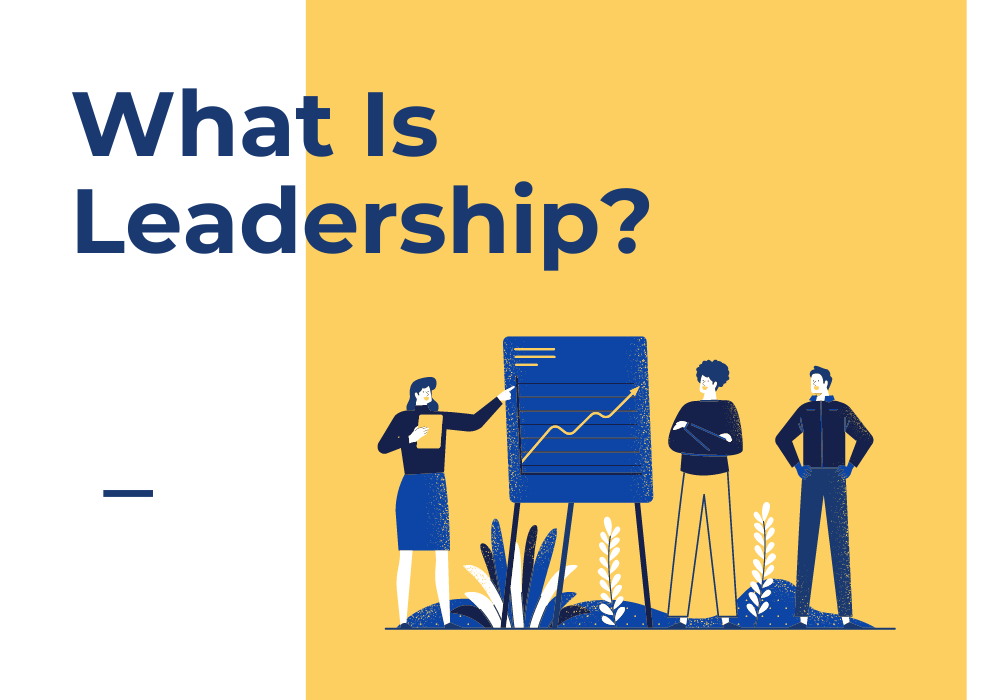Leadership is a multifaceted concept that involves guiding, influencing, and inspiring others to achieve common goals. It is essential in various contexts, including business, politics, sports, and community organizations. This article explores the definition of leadership, its key components, types of leadership styles, and the qualities of effective leaders.
1. Understanding Leadership
Leadership is the art and science of motivating and directing individuals or teams to achieve specific objectives. It encompasses various roles and responsibilities, from setting vision and strategy to managing and inspiring people.
a. Definition and Scope
- Overview: Leadership involves influencing others to work towards a common goal, often by setting a vision, providing direction, and fostering collaboration.
- Scope:
- Vision and Strategy: Creating and communicating a clear vision and strategy for achieving goals.
- Motivation and Inspiration: Encouraging and inspiring individuals to perform at their best.
b. The Importance of Leadership
- Overview: Effective leadership is crucial for achieving success in any organization or team.
- Importance:
- Goal Achievement: Guiding teams to achieve objectives and reach desired outcomes.
- Team Cohesion: Fostering a positive and productive work environment.
- Innovation and Change: Driving progress and adapting to new challenges.
2. Key Components of Leadership
Leadership involves several key components that contribute to its effectiveness and impact.
a. Vision and Strategy
- Overview: A strong leader provides a clear vision and strategic direction for their team or organization.
- Components:
- Vision: Articulating a compelling vision that motivates and aligns team efforts.
- Strategy: Developing and implementing plans to achieve the vision and goals.
b. Communication
- Overview: Effective communication is essential for successful leadership.
- Components:
- Clarity: Ensuring that messages are clear and easily understood.
- Listening: Actively listening to feedback and concerns from team members.
c. Decision-Making
- Overview: Leaders are responsible for making critical decisions that impact their teams and organizations.
- Components:
- Problem-Solving: Identifying issues and developing solutions.
- Judgment: Making informed and timely decisions based on available information.
d. Motivation and Inspiration
- Overview: Leaders inspire and motivate others to achieve their best performance.
- Components:
- Encouragement: Providing support and recognition to boost morale.
- Inspiration: Leading by example and fostering a positive work environment.
3. Types of Leadership Styles
Leadership styles can vary based on the approach a leader takes to influence and guide their team.
a. Transformational Leadership
- Overview: Transformational leaders inspire and motivate their followers to exceed expectations and embrace change. Good project management software will help you collaborate effectively and ensure that your projects are successful.
- Characteristics:
- Visionary: Articulating a compelling vision for the future.
- Innovative: Encouraging creativity and new ideas.
b. Transactional Leadership
- Overview: Transactional leaders focus on routine tasks and performance management, using rewards and punishments to achieve goals.
- Characteristics:
- Structured: Implementing clear processes and standards.
- Reward-Based: Providing rewards for meeting performance targets.
c. Servant Leadership
- Overview: Servant leaders prioritize the needs and well-being of their team members, fostering a supportive and collaborative environment.
- Characteristics:
- Empathy: Understanding and addressing the needs of others.
- Supportive: Providing resources and support to help team members succeed.
d. Autocratic Leadership
- Overview: Autocratic leaders make decisions unilaterally and expect compliance from their team members.
- Characteristics:
- Directive: Providing clear instructions and expectations.
- Control: Maintaining strict control over decision-making and processes.
4. Qualities of Effective Leaders
Effective leaders possess certain qualities that enable them to inspire, influence, and guide their teams successfully.
a. Emotional Intelligence
- Overview: Emotional intelligence involves understanding and managing one’s own emotions and those of others.
- Qualities:
- Self-Awareness: Recognizing one’s own strengths and weaknesses.
- Empathy: Understanding and responding to the emotions and needs of others.
b. Integrity
- Overview: Integrity is the adherence to ethical principles and consistency in actions and values.
- Qualities:
- Honesty: Being truthful and transparent in all dealings.
- Reliability: Consistently delivering on promises and commitments.
c. Adaptability
- Overview: Adaptability is the ability to adjust to changing circumstances and new challenges.
- Qualities:
- Flexibility: Willingness to change plans and approaches when necessary.
- Resilience: Ability to bounce back from setbacks and continue moving forward.
d. Accountability
- Overview: Accountability involves taking responsibility for one’s actions and decisions.
- Qualities:
- Ownership: Owning up to mistakes and learning from them.
- Responsibility: Being accountable for the outcomes of decisions and actions.
5. Developing Leadership Skills
Leadership skills can be developed and enhanced through various methods and practices.
a. Education and Training
- Overview: Formal education and training programs can provide foundational knowledge and skills in leadership.
- Methods:
- Leadership Courses: Enrolling in courses and workshops focused on leadership development.
- Mentoring: Seeking guidance and feedback from experienced leaders.
b. Experience and Practice
- Overview: Gaining practical experience and applying leadership skills in real-world situations is crucial for growth.
- Methods:
- Leadership Roles: Taking on leadership positions and responsibilities.
- Reflective Practice: Reflecting on experiences and learning from successes and failures.
c. Feedback and Self-Assessment
- Overview: Regular feedback and self-assessment help leaders identify areas for improvement and growth.
- Methods:
- Performance Reviews: Seeking feedback from peers, subordinates, and supervisors.
- Self-Evaluation: Assessing one’s own leadership skills and setting goals for improvement.
Conclusion
Leadership is a dynamic and essential aspect of guiding individuals and teams towards achieving common goals. By understanding its key components, exploring various leadership styles, and developing the qualities and skills of effective leaders, individuals can enhance their ability to lead successfully and make a positive impact on their organizations and communities.












